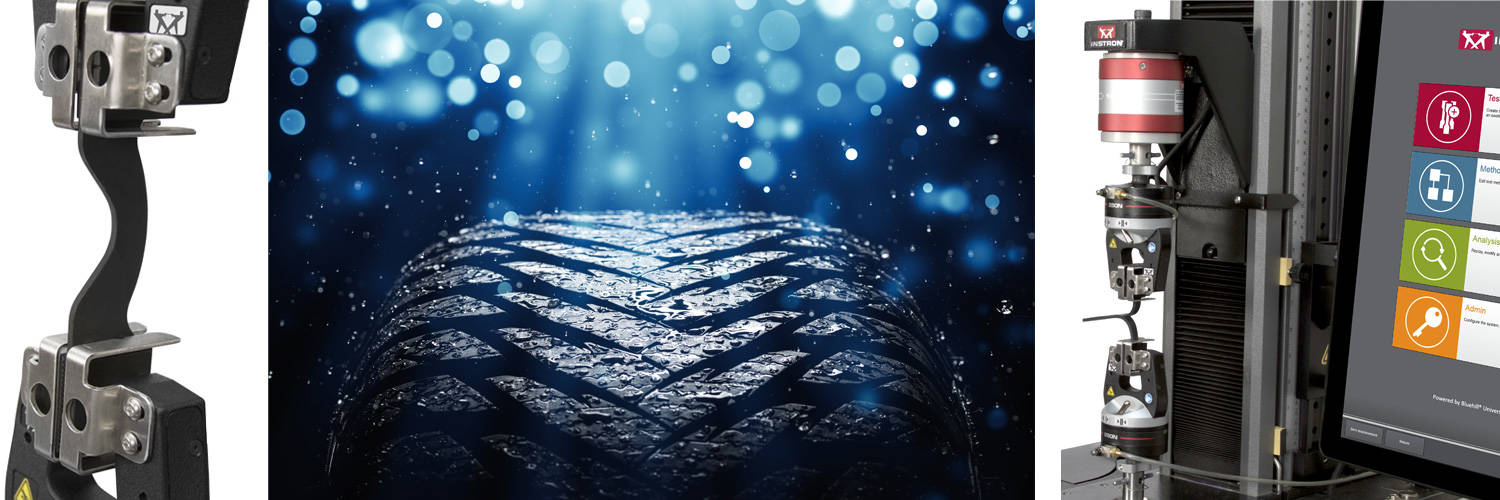ISO 34 Tear Strength of Rubber, Vulcanized or Thermoplastic

ISO 34-1:2010 is used to investigate the tear strength of either vulcanized or thermoplastic rubber. Tear testing of elastomers is particularly important because most elastomers that break or fail in their intended application do so because of the initiation and spread of a tear. Industries utilizing this testing include raw material manufacturers, developers of elastomer technology, and producers of consumer products, in addition to manufacturers that use rubber in a way where it risks failure by tearing, such as the automotive industry.
This standard specifies three different methods for specimen shape: trouser, angle, and crescent. In all cases, force is applied to the material in a tensile direction and a value for tear strength is calculated. ISO 34-1 is intended to measure tearing strength only: anyone seeking to determine the tensile properties of elastomers should refer to ISO 37. The specimen types used in ISO 34 testing provide a range of options for geometries and stress concentrations that might lead to the initiation of a tear in a real-world application. The results from this test aren’t meant to quantify the tear strength of a material in service, but simply to understand how it behaves under the specified test conditions.
Materials Testing System
System capacity will depend on the strength of the elastomer. However, most tests to this standard will fall below 5 kN, making this application perfect for a single column frame from Instron's 6800 or 3400 Series. Bluehill Universal software is provided with one free application module upon purchase, which contains pre-configured test methods and supporting documentation to assist with testing to various standards, including ISO 34, which is part of the Elastomers module.
| ISO 34 Test Setup | |
|---|---|
| 1) | 6800 Series Universal Testing System |
| 2) | Bluehill Universal Software |
| 3) | 2580 Series Load Cell |
| 4) | 2712-041 Pneumatic Side Action Grips |

Grips
Pneumatic side action grips or self-tightening roller grips are optimal for testing to ISO 34. An important element of ISO 34 testing is to align specimens vertically and in the same position for each test. Because tear tests are known to produce wide variation in results, it is important to eliminate as many variables as possible. Pneumatic side action grips have the advantage over other grips in that they help to align the specimen. It is also important to pair the grips with jaw faces to make visual alignment easier: jaw faces should be the same width as the specimen. Self-tightening roller grips feature easy specimen insertion and use a snubbing type clamping action to increase the holding force as the load on the specimen increases. These grips can also be used for testing at non-ambient temperatures.
Testing Tips and Tricks
- ISO 34 provides similar results to ASTM D624, another common test that measures the tear strength of elastomeric materials. Though the ASTM and ISO organizations are currently working toward diminishing the differences between these two standards, the results cannot yet be considered comparable, and care must be taken to ensure the correct test standard is being used for a given application.
- Specimens for ISO 34 are usually prepared from 2 mm thick sheets with a cutting press and die. The profile of the die must match the specimen dimensions identified in the standard for the relevant test piece. In the case of trouser and crescent test pieces, it is necessary to produce a cut or a nick into the test specimen prior to the start of the test. Additionally, a method for checking the dimensions of the nick, such as an optical microscope, is required.
- In many cases, it is typical to prepare and test specimens in both the cross and machine directions to study the anisotropy of the material.
- To read the full test methods, purchase ISO 34-1:2010.






